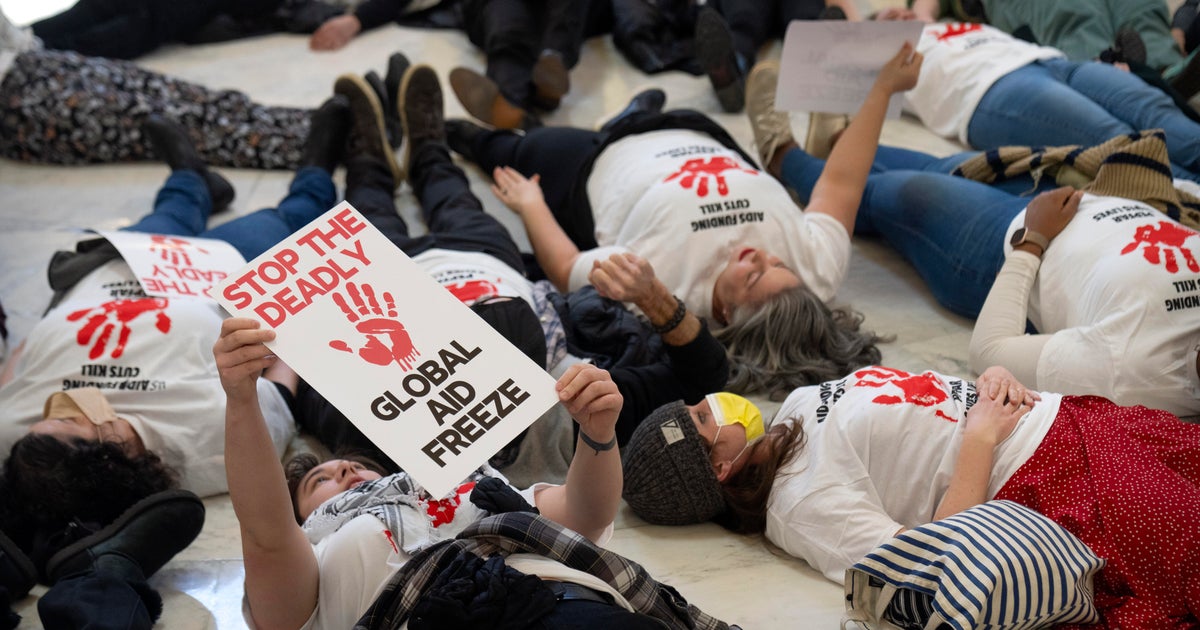Unintended Consequences: How Proposed Foreign Aid Cuts Could Worsen the HIV Crisis
In recent years, significant progress has been made in combating the HIV epidemic globally. However, a new wave of proposed cuts to foreign aid threatens to unravel these hard-fought advancements. A recent study has raised alarming concerns that these reductions could lead to a staggering increase in HIV-related deaths, highlighting the potential for unintended consequences that could undermine years of progress. Experts warn that the implications of these cuts could extend far beyond immediate financial impacts, affecting public health, economies, and communities worldwide.
The Current Landscape of HIV/AIDS
As of 2021, approximately 38 million people worldwide were living with HIV, with 1.5 million new infections reported that year alone. The epidemic has disproportionately affected low- and middle-income countries, particularly in sub-Saharan Africa, where access to treatment and prevention strategies is often limited. Thanks to global efforts, including foreign aid programs, the number of new infections and AIDS-related deaths has been declining. However, the fight is far from over.
Programs funded by foreign aid have played a crucial role in providing antiretroviral therapy (ART), supporting prevention initiatives, and enhancing health infrastructure. For instance, the United States President’s Emergency Plan for AIDS Relief (PEPFAR) has been instrumental in treating millions and preventing countless new infections. Yet, with proposed cuts to such funding sources, the sustainability of these gains is now in jeopardy.
The Proposed Cuts and Their Implications
The proposed reductions in foreign aid stem from various political and economic pressures, including budget constraints and shifting priorities. These cuts could lead to:
- Reduced Access to Treatment: A decrease in funding could result in fewer resources for ART distribution, making it harder for individuals living with HIV to access life-saving medications.
- Increased New Infections: Prevention programs, such as condom distribution and education campaigns, may face severe budget cuts, leading to a rise in new HIV infections.
- Strain on Health Systems: Health facilities that rely on foreign aid for operational expenses may struggle to maintain services, resulting in a backlog of patients and diminished care quality.
These consequences paint a grim picture, suggesting that the proposed cuts could lead to a resurgence of the epidemic, reversing years of progress and potentially leading to millions more infections and deaths.
Understanding Unintended Consequences
Unintended consequences refer to outcomes that are not the ones foreseen or intended by a purposeful action. In the context of foreign aid cuts, the immediate financial relief might seem appealing to some policymakers; however, the long-term repercussions could be catastrophic. It is essential to recognize that health is intricately connected to economic stability, social welfare, and security. Cutting foreign aid is not merely a budgetary issue; it is a public health crisis waiting to unfold.
Experts warn that the ramifications of reduced foreign aid could exacerbate existing inequalities and public health challenges. Countries that have made significant gains in HIV prevention and treatment could see those advancements vanish, leading to:
- Increased Stigma: A resurgence in HIV cases could lead to greater stigma and discrimination against those living with the virus, further marginalizing vulnerable populations.
- Economic Decline: A rise in health issues can lead to decreased workforce productivity, heightened healthcare costs, and increased strain on national budgets.
- Social Instability: Health crises often lead to social unrest, particularly in regions already facing political or economic turmoil.
Addressing the Crisis: Alternatives to Cuts
Rather than slashing foreign aid, experts propose a more nuanced approach to funding that prioritizes effective interventions. Here are some strategies that could help mitigate the impact of proposed cuts:
- Enhanced Collaboration: Strengthening partnerships between governments, NGOs, and private sectors can improve resource allocation and enhance program efficiency.
- Innovative Financing: Exploring alternative funding mechanisms, such as social impact bonds or public-private partnerships, could provide the necessary resources to sustain HIV programs.
- Community-Based Solutions: Investing in local organizations that understand the cultural and social dynamics of their communities can lead to more effective prevention and treatment strategies.
The Role of Advocacy and Awareness
Public awareness and advocacy play a critical role in influencing policy decisions. Grassroots movements, community leaders, and health organizations must unite to voice the potential dangers of foreign aid cuts. Engaging the public through campaigns that highlight the personal stories of those affected by HIV can humanize the issue and garner support for continued funding.
Moreover, educating policymakers about the long-term benefits of investing in health can shift the narrative from short-term savings to sustainable growth. By framing foreign aid as an investment rather than a cost, advocates can help secure the necessary resources to combat the HIV epidemic effectively.
Conclusion: A Call to Action
The proposed cuts to foreign aid are a matter of grave concern in the fight against HIV/AIDS. The potential for unintended consequences is significant, with the possibility of reversing years of progress and leading to increased suffering and loss of life. It is crucial for stakeholders at all levels to advocate for sustained funding and innovative approaches to tackling the epidemic. Together, we can ensure that the hard-won gains in HIV prevention and treatment are not lost to shortsighted budgetary decisions. By prioritizing health, we pave the way for a brighter, healthier future for all.
See more WebMD Network



